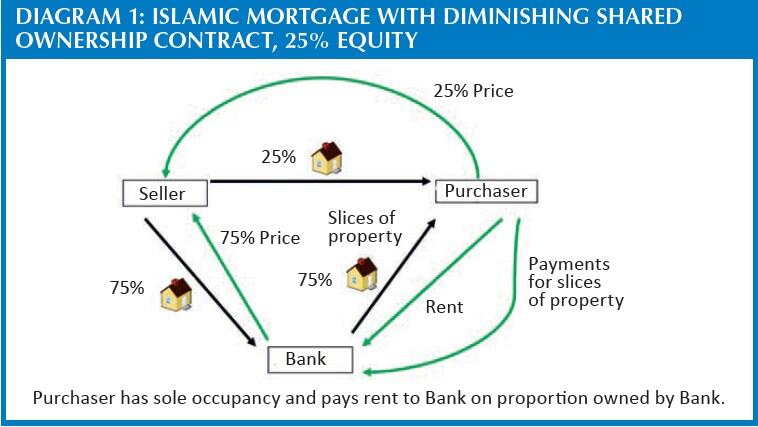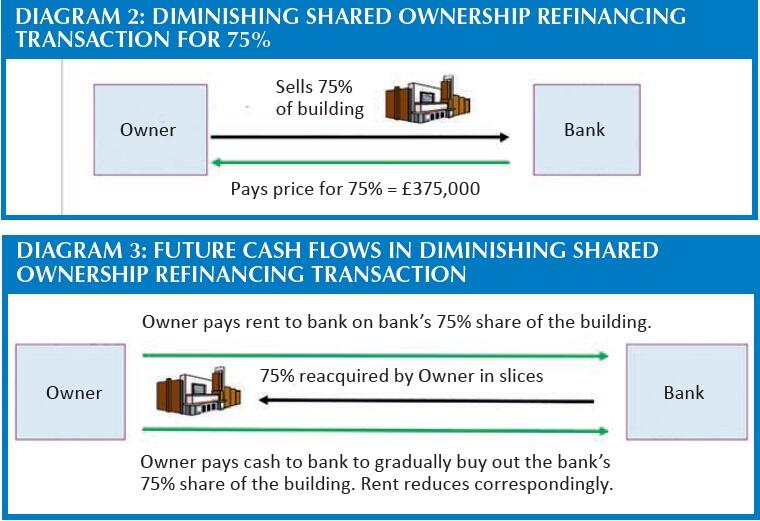The Shariah compliant refinancing trap

Mohammed Amin provides guidance on avoiding traps for the unwary when using Shariah compliant financing
Key Points
What is the issue?
UK Islamic banks use a structure known as diminishing shared ownership to offer real estate finance in a manner compliant with Shariah — Islamic religious requirements. Tax law has been enacted for this but is not comprehensive. Accordingly, the use of the structure to refinance appreciated real estate triggers crystallisation of the inherent capital gain.
What does it mean to me?
Clients may use this structure without realising they have triggered a CGT disposal. That can lead to them filing incorrect tax returns.
What can I take away?
Clients need to be advised of the taxation issues in Shariah compliant refinancing before undertaking it. Where large amounts are involved, it may be possible to devise a bespoke Shariah compliant solution that avoids triggering a CGT disposal.
The purchase of real estate, whether a principal private residence or an investment property, is normally funded in part by equity provided by the purchaser, and in part by interest bearing debt provided by a bank or other financial institution.
However, many Muslims consider that Islam prohibits receiving or paying interest. Accordingly, alternative acquisition structures have been developed which comply with the rules of Islam as interpreted by Shariah scholars, but which do not involve the payment of interest to the finance provider. Shariah scholars allow transactions to have similar economics to debt, provided they do not involve borrowing money or paying interest.
The most common structure used by Islamic banks in the UK is known in tax law (ITA 2007 s 564D and CTA 2009 s 504) as diminishing shared ownership.
It involves the purchaser and the bank buying the property jointly. The purchaser occupies the whole property, and pays rent to the bank on the bank’s share of the property. The rent can be fixed, but is more often re-set periodically, and in practice is set by reference to market interest rates plus the bank’s margin.
Over time, the purchaser gradually buys out the bank’s share of the property (almost always at original cost), and as the purchaser does so, the level of rent falls as it is paid on a smaller proportion of the property.
The structure is illustrated in Diagram 1 with the equivalent of a 25% deposit.

Prior to specific legislation to enable it, this structure gave rise to several UK tax problems:
- 75% of the property undergoes two sales (from Seller to Bank, and from Bank to Purchaser) giving rise to double SDLT.
- The tax treatment of rental expense and rental income is often very different from that of interest. Consider for example rent being paid to a foreign bank.
Changes in UK tax law have eliminated these problems. FA 2003 s 71A eliminates the double SDLT charge. ITA 2007 s 564M and CTA 2009 s 510 mean that for income tax purposes and corporation tax purposes the rent receives the same tax treatment as interest would receive.
Refinancing appreciated property
Where property has little or no debt attaching to it, either because the debt has been paid down or because the property has appreciated in value, it is quite common for the owner to refinance it to take on more debt.
Private individuals do this to obtain money they can spend or give to family members, and real estate investors do this as part of the financial management of their real estate portfolio.
Taking on additional interest paying debt, even if it is secured on the property, involves no tax consequences. There are no SDLT transactions, and taking on extra debt secured on the property does not constitute a disposal of that property for capital gains tax purposes.
Muslims who consider that paying interest is religiously prohibited cannot, of course, refinance by taking out a loan secured on the property. However, the diminishing shared ownership structure can be used for refinancing purposes.
This is illustrated in Diagram 2. For simplicity, this assumes that the Owner before refinancing has attained 100% ownership of the property. The property is assumed to be worth £500,000 and the Islamic bank agrees to buy 75% of it for £375,000.
In future, the Owner will pay rent to the bank, and will buy back the bank’s share of the property in slices, as illustrated in Diagram 3.

The SDLT reliefs cited above also apply to this transaction, so there should be no SDLT on either the sale of 75% by Owner to Bank, or its reacquisition. Also, the rent paid will receive the same tax treatment as interest would receive.
However, the sale by Owner to Bank of 75% of the property is a part disposal of the property for capital gains tax purposes. There are no specific relieving provisions.
If the property is the Owner’s principal private residence, the part disposal will not give rise to any CGT liability. Otherwise however it is a taxable disposal. If the building is now worth say £500,000 and cost £100,000, then the taxable gain is £300,000 computed using the part disposal formula.
Perhaps because Islamic finance is a relatively niche subject, there is a surprising lack of awareness of this exposure amongst professionals serving clients who might engage in Islamic financing of real estate transactions. In my view, eliminating this tax exposure would require primary legislation. While the Treasury has power (now contained in TIOPA 2010 s 366) to vary the alternative finance arrangements provisions by regulation, in my opinion that power is not broad enough to enable a regulation to specify that the sale to the bank for refinancing purposes is not a disposal.
However, drafting innovation is not required because there is existing statutory language which could readily be re-purposed. This relates to the tax law (ITA 2007 s 564G and CTA 2009 s 507) for investment bond arrangements.
This exists to facilitate an Islamic finance structure called sukuk in Arabic. The structure normally entails an Owner selling real estate to a Special Purpose Vehicle (SPV) which pays for it by issuing investment bonds. The Owner then pays rent to the SPV and eventually buys back the real estate.
As well as the basic law for investment bonds cited above, there are further provisions made in FA 2009 Schedule 61 para 5. In brief, they require (using the terminology of the transaction above):
- Owner to transfer land to the SPV and the SPV to agree that when the SPV ceases to hold the land, it will be transferred back to the original owner.
- SPV to issue sukuk which relate to the land.
- SPV to lease the land back to owner to generate income for the purposes of the sukuk.
- Within 120 days, the creation of a first legal charge on the land in favour of HMRC to provide security for the SDLT that would otherwise be payable on the sale of the land from owner to SPV.
- The SPV to issue sukuk to investors which raise for the SPV cash of not less than 60% of the value of the building at the time it was sold by owner to SPV.
- SPV continues to hold the land as an asset for the purposes of the sukuk until the sukuk are terminated.
- Within 30 days of the sukuk terminating, the land is transferred back to the owner.
- The sale from SPV back to owner does not take place more than 10 years after the initial sale from the owner to the SPV.
Provided these conditions are satisfied, then for CGT purposes each of the sale of the building by the owner to SPV, the lease from SPV to the owner, and the sale of the building by SPV back to the owner are not treated as disposals.
The CIOT has raised this problem with HMRC, and suggested equivalent legislation to FA 2009 Schedule 61 para 5 should apply where part or all of building is sold, and then re-acquired using diminishing shared ownership. However, the Government has currently declined to legislate, giving the response below with authorisation to publish it: ‘The government recognises the need for greater stability in the tax system and as such, recognises the importance of an evidence based approach to policy changes. To date, evidence of the scale of the issue has been limited making justification of a change in legislation challenging. All tax policy is kept under review and any new evidence as to the extent to which the existing legislation is affecting market outcomes will be considered carefully as part of that process.’
Accordingly, advisers need to be aware of the problem to avoid their clients stumbling into this CGT trap, and to point out the correct reporting obligations if a disposal has already been triggered.


